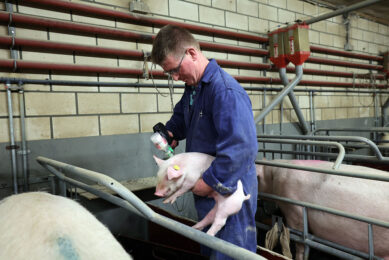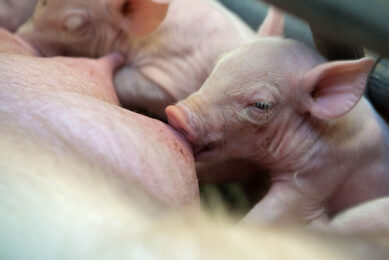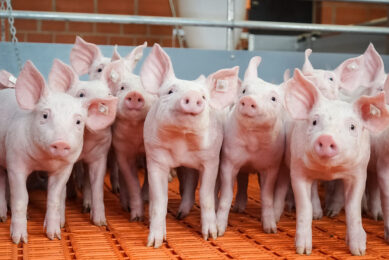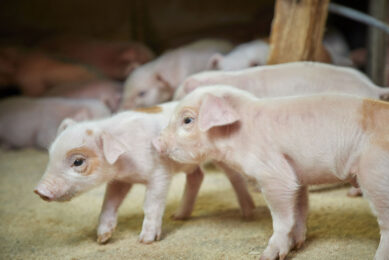A second iron injection to newborn piglets. Is it a good idea?
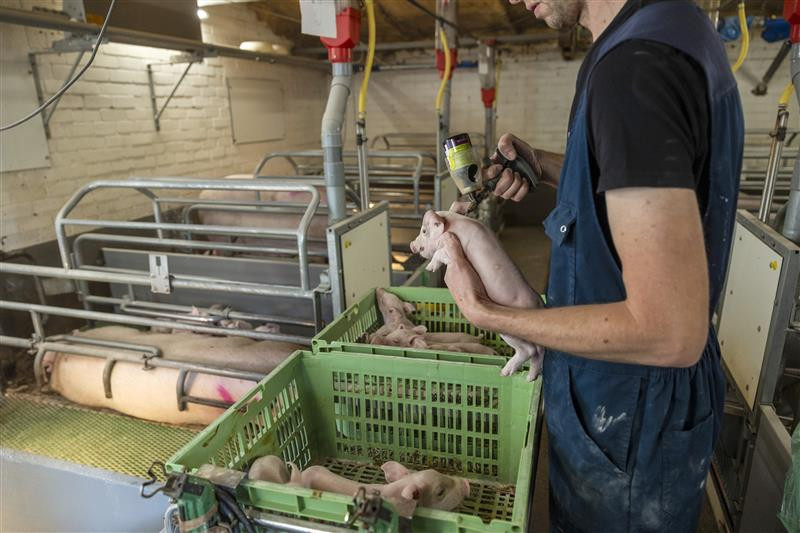
In scientific trials, a second iron injection for suckling piglets at 7-8 days of age has been observed to improve post-weaning growth performance and haemoglobin levels, and affect the faecal microbiome.
That was one of the outcomes of a trial run by researchers from various universities in the United States, in cooperation with the Agricultural Research Service (ARS), part of the US Department of Agriculture (USDA) and iron supplier Pharmacosmos.
The researchers also wrote that “an additional 100 ppm of dietary iron supplementation increased haemoglobin levels and altered the faecal microbiome in the late nursery period, but did not affect post-weaning growth.”
The team published about the trial in a recent issue of the peer-reviewed Journal of Animal Science. They painted a context of single iron injections perhaps not being sufficient enough with trends pointing to weaning ages increasingly tending to go up to 28 days and piglets growing faster – and many companies and research institutes zoom in on that these days. Questions are: do piglets need additional supplies of iron, and if so, how? Through injections, through nutrition – or is detailed attention and management already sufficient?
Evaluating the effects of a second injection to piglets
The research team, which included a team member of iron producer Pharmacosmos, set up a trial including iron injections. They wrote: “The aim of this study was to concurrently evaluate the effects of 2nd iron injection and dietary iron levels on growth performance, haematological parameters, serum and liver mineral content, faecal score, short-chain fatty acids and the microbiome of pigs.”
For this trial, the team used 70 newborn pigs from 7 litters, which were assigned to either 1 or 2 iron injections within the litter. The animals received the first intramuscular iron injection (200 mg) at 2-3 days of age. Those pigs that were assigned to the second injection treatment received an additional iron injection 5 days after the 1st injection. At weaning (days 27-30 of age), pigs within iron injection treatments were divided into 2 nursery diet treatments for a 27-day growth period.
Treatments were:
Results of the trial
In the results, the research team summed up that the 2nd iron injection increased liver iron content at weaning, and serum iron, haemoglobin and haematocrit levels until day 13 postweaning. In the nursery period, pigs receiving the second iron injection had a greater final body weight, overall growth rate and feed intake and lower faecal score, indicating firmer faeces compared to those receiving 1 iron injection.
The team wrote that there was no major effect of dietary iron level or interaction with the iron injection treatment in any measurements, except that the pigs fed the nursery diets with 200 ppm iron had greater haemoglobin and haematocrit levels at day 27 postweaning and a lower faecal score in the late nursery period than those fed the nursery diets with 100 ppm iron.
Second iron injection to piglets
In their conclusion, the researchers wrote, “The second iron injection given to suckling pigs improved postweaning growth performance and the levels of haemoglobin and other haematological parameters, reduced faecal score indicating firmer faeces and platelet count, and affected serum mineral levels, white blood cell counts, and the faecal microbiome community. An additional 100 ppm of dietary iron over the requirement estimate increased haemoglobin levels, reduced faecal score, and altered white blood cell counts and the faecal microbiome community in the late nursery period but did not affect postweaning growth.”
They continued to write, “The current study also demonstrated that the effect of the second iron injection on haematological parameters could be maintained high until the first few weeks postweaning, while its effect on growth performance could be observed in the late nursery period, although the second iron injection is performed in the early suckling period.”



